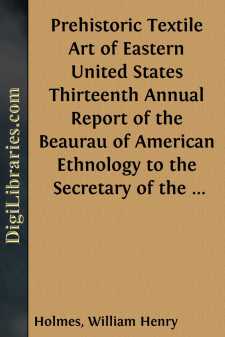Categories
- Antiques & Collectibles 13
- Architecture 36
- Art 48
- Bibles 22
- Biography & Autobiography 813
- Body, Mind & Spirit 142
- Business & Economics 28
- Children's Books 17
- Children's Fiction 14
- Computers 4
- Cooking 94
- Crafts & Hobbies 4
- Drama 346
- Education 46
- Family & Relationships 57
- Fiction 11829
- Games 19
- Gardening 17
- Health & Fitness 34
- History 1377
- House & Home 1
- Humor 147
- Juvenile Fiction 1873
- Juvenile Nonfiction 202
- Language Arts & Disciplines 88
- Law 16
- Literary Collections 686
- Literary Criticism 179
- Mathematics 13
- Medical 41
- Music 40
- Nature 179
- Non-Classifiable 1768
- Performing Arts 7
- Periodicals 1453
- Philosophy 64
- Photography 2
- Poetry 896
- Political Science 203
- Psychology 42
- Reference 154
- Religion 513
- Science 126
- Self-Help 84
- Social Science 81
- Sports & Recreation 34
- Study Aids 3
- Technology & Engineering 59
- Transportation 23
- Travel 463
- True Crime 29
William Henry Holmes
William Henry Holmes was an American archaeologist, geologist, and writer, born on December 1, 1846. He is best known for his contributions to the study of prehistoric Native American cultures and his detailed illustrations of archaeological sites. Holmes authored several works, including "Handbook of Aboriginal American Antiquities," which provided a comprehensive overview of Native American artifacts and their cultural significance. Additionally, he was a key figure at the Smithsonian Institution, where he helped advance the field of anthropology in the United States.
Author's Books:
Sort by:
INTRODUCTORY. This paper is the third of a series of preliminary studies of aboriginal ceramic art which are intended to be absorbed into a final work of a comprehensive character. The groups of relics selected for these studies are in all cases of limited extent, and are such as can lay claim to a considerable degree of completeness. It is true that no series of archæologic objects can ever be...
more...
INTRODUCTORY. For the investigation of art in its early stages and in its widest sense—there is probably no fairer field than that afforded by aboriginal America, ancient and modern. At the period of discovery, art at a number of places on the American continent seems to have been developing surely and steadily, through the force of the innate genius of the race, and the more advanced nations were...
more...
INTRODUCTORY. Mr. Palmer began his explorations early in July, 1881, and continued with marked success until the end of the year. He first paid a visit to the Cherokee Indians of North Carolina, and collected a large number of articles manufactured or used by this people, besides a number of antiquities from the same region. From Carolina he crossed into Tennessee, and began work by opening a number of...
more...
SCOPE OF THE WORK. About the year 1890 the writer was requested by the Director of the Bureau of Ethnology to prepare certain papers on aboriginal art, to accompany the final report of Dr. Cyrus Thomas on his explorations of mounds and other ancient remains in eastern United States. These papers were to treat of those arts represented most fully by relics recovered in the field explored. They included...
more...
INTRODUCTION. The textile art is one of the most ancient known, dating back to the very inception of culture. In primitive times it occupied a wide field, embracing the stems of numerous branches of industry now expressed in other materials or relegated to distinct systems of construction. Accompanying the gradual narrowing of its sphere there was a steady development with the general increase of...
more...






